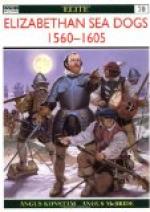Taking this first century as a whole, the general reader cannot do better than look up the third volume of Justin Winsor’s Narrative and Critical History of America (1884) and the first volume of Avery’s History of the United States and its People (1904). Both give elaborate references to documents and books, but neither professes to be at all expert in naval or nautical matters, and a good deal has been written since.
THE CABOTS. Cabot literature is full of conjecture and controversy. G.P. Winship’s Cabot Bibliography (1900) is a good guide to all but recent works. Nicholls’ Remarkable Life of Sebastian Cabot (1869) shows more zeal than discretion. Harrisse’s John Cabot and his son Sebastian (1896) arranges the documents in scholarly order but draws conclusions betraying a wonderful ignorance of the coast. On the whole, Dr. S.E. Dawson’s very careful monographs in the Transactions of the Royal Society of Canada (1894, 1896, 1897) are the happiest blend of scholarship and local knowledge. Neither the Cabots nor their crews appear to have written a word about their adventures and discoveries. Consequently the shifting threads of hearsay evidence soon became inextricably tangled. Biggar’s Precursors of Cartier is an able and accurate work.
ELIZABETH. Turning to the patriot queen who had to steer England through so many storms and tortuous channels, we could find no better short guide to her political career than Beesley’s volume about her in ’Twelve English Statesmen.’ But the best all-round biography is Queen Elizabeth by Mandell Creighton, who also wrote an excellent epitome, called The Age of Elizabeth, for the ‘Epochs of Modern History.’ Shakespeare’s England, published in 1916 by the Oxford University Press, is quite encyclopaedic in its range.
LIFE AFLOAT. The general evolution of wooden sailing craft may be traced out in Part I of Sir George Holmes’s convenient little treatise on Ancient and Modern Ships. There is no nautical dictionary devoted to Elizabethan times. But a good deal can be picked up from the two handy modern glossaries of Dana and Admiral Smyth, the first being an American author, the second a British one. Smyth’s Sailor’s Word Book has no alternative title. But Dana’s Seaman’s Friend is known in England under the name of The Seaman’s Manual. Technicalities change so much more slowly afloat than ashore that even the ultra-modern editions of Paasch’s magnificent polyglot dictionary, From Keel to Truck, still contain many nautical terms which will help the reader out of some of his difficulties.




